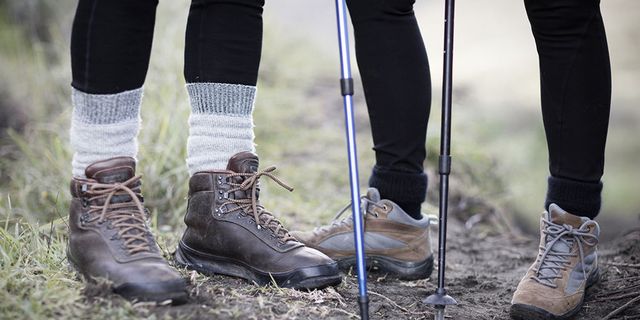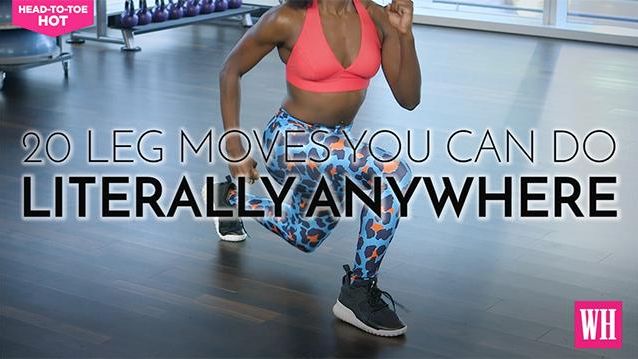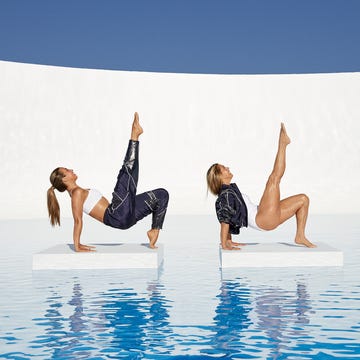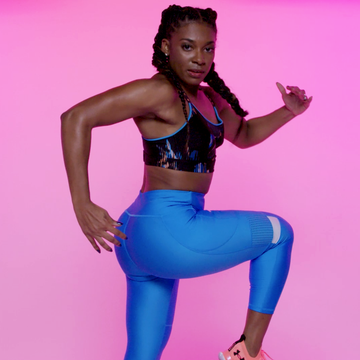In ideal weather, it’s no surprise that exercising outdoors becomes increasingly popular—especially hiking, should you have a mountain (or any vegetation) nearby. But, before you begin blazing trails, or climbing toward the sky, there are some steps you should take to avoid injury.
We asked seven experts for their best pieces of advice for embarking on a long excursion. Read on for their tips and tricks, to avoid cuts, scrapes, bruises, and wounds, blisters, and the like.
Without further ado, get to it... take a hike!
“Appropriate shoes really do make a difference. A heavy boot will be more supportive for my feet and my knees when I carry a heavy pack. Every type of shoe has its limits, but it also has its sweet spot. Play with them and see what works for you.” —Jessie Tietjen, REI Outdoor School instructor in Sacramento, CA
Related: 6 Shoes That Are Perfect For Trail Junkies
“Wear your new shoes or boots around the house with the socks that you plan to wear on future hikes. It’s a good idea to start small, with shorter hikes, to feel for any potential footwear issues. Always lace up your shoes or boots snugly, but not too tight. Breaking in your shoes before extensive use will help identify trouble spots and can prevent blisters and foot pain before you are committed to a long hike.” —Rob Macgowan, Director of Recreation at Sunriver Resort, A Destination Hotel, in Central Oregon
Prepare your legs for a long hike with these 20 leg moves you can do anywhere:
“Merino wool or a Merino-synthetic blend are great options for socks, as Merino does a wonderful job of wicking moisture away from your feet. Wool socks in the summer might sound like an oxymoron, but they work very well. If your planned hike is somewhere that gets a lot of moisture, like the Pacific Northwest, Southeast Alaska or windy Patagonia, you should plan on bringing at least one extra pair of socks. If your trek is planned to be four days in length, as you hike through the Torres del Paine Park in southern Chile, I would bring three pairs of socks, which will allow [you] to change every other day and have one back up pair, if it rains hard one day.” —Todd Rutledge, Guide at Mountain Trip in Telluride, CO
Related: 25 Gorgeous Hikes You Have to Do in Your Lifetime
“If you are on a trail with vegetation overlapping the trail, either wear pants, [or] shorts that convert into pants, or carry a pair of knee high compression socks that you can wear to avoid scrapes and cuts during that part of the trail. Same would go for long sleeves. The rim-to-rim hike of the Grand Canyon offers well-groomed trails where vegetation is cut back.” —Michelle Delloso, Red Rocks Expeditions Leader at Red Mountain Resort in Ivins, UT
“Pay attention to footwork when you get tired. If I'm traveling over rugged terrain, I like to bring trekking poles for stabilization—super helpful with a heavy pack, and can go a long way to preventing a slip or fall.” —Caroline Gleich, Keen Ambasador, Professional Ski Mountaineer, Endurance Athlete and Environmental Activist in Salt Lake City, UT
Related: 10 Ways to Have Your Best Hike Ever
“Depending on the terrain and season, carrying one water bottle and one high-quality filter is all you’ll need. The most accurate measurement is how much and how clear is your urine. When it rains, it makes sense to capture that water with a tarp or tent fly. The goal here is to travel as light as possible.” —Michael Ridolfo, Head Naturalist at Mohonk Mountain House in New Paltz, NY
(The Ultralight Water Purifier Bottle is perfect for keeping you hydrated during long treks — get it from the Women's Health Boutique!)
“Moleskin is the classic cure for blisters, but duct tape will work too. The downside with duct tape is it gets a little gunky sometimes. Both moleskin and duct tape are applied directly to the hotspot, blister, or open blister to prevent further rubbing or infection. Pro tip: Wrap a section of your water bottle in a few rounds of duct tape so that you're always prepared, and save yourself the weight of carrying around the full roll of tape.” —Steph Hon, Assistant Editor at Reel Rock Tour / Big Up Productions in Pound Ridge, NY













